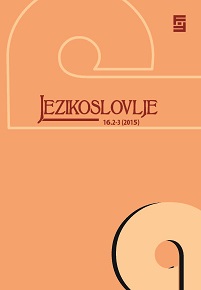English aspectual particles are of two types
English aspectual particles are of two types
Author(s): Milada WalkováSubject(s): Syntax, Semantics
Published by: Filozofski fakultet, Sveučilište Josipa Jurja Strossmayera, Osijek
Keywords: particle verbs; telicity; phrasal verbs; aspect; argument structure
Summary/Abstract: The paper presents a corpus-based study of English aspectual particle verbs. The standard view (Brinton 1985) is that particles mark telicity; a more recent account argues that particles are comparative and/or resultative (Cappelle & Chauvin 2010). However, neither account applies to all particles. Therefore I propose that there are two types of aspectual particles, which differ in aspect-marking. As corpus data show, the two types of particles also differ in other aspectually relevant properties, namely the type of verb root with which particles combine, transitivity and type of direct objects the respective particle verbs license. In particular, particles with a continuative meaning (about, along, around, on) combine with manner verbs rather than result verbs. They form intransitive particle verbs, or else transitive particle verbs with an unaffected direct object. Particles which mark telicity (down, off, out, over, through, up) typically combine with result verb roots. They form particle verbs which are either intransitive or transitive, with either an affected or unaffected direct object.
Journal: Jezikoslovlje
- Issue Year: XVI/2015
- Issue No: 2-3
- Page Range: 149-168
- Page Count: 20
- Language: English

